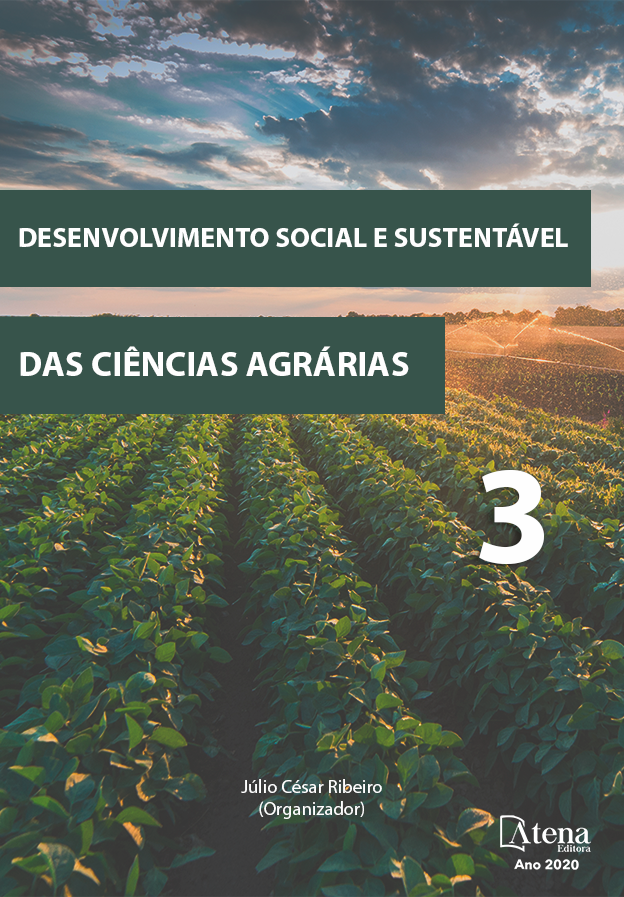
RESPOSTAS DE GENÓTIPOS DE CANA-ENERGIA À ADUBAÇÃO ORGÂNICA
O objetivo deste trabalho foi avaliar os efeitos da adubação orgânica em diferentes genótipos de cana‑energia na cana-soca. A área experimental utilizada foi da Escola de Agronomia pertencente a Universidade Federal de Goiás, certificada como orgânica pelo IBD (certidão GO-022-001), localizada no município de Goiânia-GO. O solo da área experimental é classificado como Latossolo Vermelho Distroférrico. Os quatro genótipos de cana-energia foram obtidos do Programa de Melhoramento Genético de Cana-de-açúcar da Universidade Federal de Viçosa (PMGCA/UFV/RIDESA) e plantados em 2016. O ensaio foi conduzido em parcelas constituídas de 7,5 m2 por parcela com bordaduras de 1,5m (5 metros de comprimento, espaçadas em 1,5m) com o plantio de toletes contendo três gemas em sulcos de 30 cm de profundidade, sendo colocados três toletes por metro. O delineamento experimental foi o de blocos casualizados com cinco repetições. Os tratamentos foram: T1- Adubação orgânica (200 m3/ha-1 de biofertilizante) e T2- Testemunha (sem adubação). No manejo da adubação foi utilizado 200 m3/ha-1 de esterco bovino curtido, sendo 1 parte e 2 de água, base de volume. As variáveis analisadas agronômicas e fenotípicas foram: altura da planta, diâmetro do colmo e biomassa total. Conclui-se que os genótipos de cana-energia avaliados não são responsíveis a adubação orgânica empregada. Os genótipos com maiores desempenhos em termos de biomassa são: RB 127008 e UFPR 127004.
The objective of this work was to evaluate the effects of organic fertilization on different genotypes of energy cane in third year harvest. The experimental area used was from the School of Agronomy belonging to the Federal University of Goiás, certified as organic by IBD (certificate GO-022-001), located in the city of Goiânia-GO. The soil of the experimental area is classified as Red Latosol Distroférrico. The four genotypes of energy cane were obtained from the Sugarcane Genetic Improvement Program of the Federal University of Viçosa (PMGCA / UFV / RIDESA) and planted in 2016. The trial was conducted in plots consisting of 7.5 m2 per parcel with borders of 1.5 m (5 meters long, spaced 1.5 meters) with the planting of counters containing three buds in 30 cm deep grooves, with three counters being placed per meter. The experimental design was randomized blocks with five replications. The treatments were: T1- Organic fertilization (200 m3 / ha-1 of biofertilizer) and T2- Control (without fertilization). In the management of fertilization, 200 m3 / ha-1 of tanned manure was used, 1 part and 2 of water, volume base. The analyzed agronomic and phenotypic variables were: plant height, stem diameter and total biomass. It is concluded that the sugarcane genotypes evaluated are not responsible for the organic fertilization used. The genotypes with the highest performance in terms of biomass are: RB 127008 and UFPR 127004.
RESPOSTAS DE GENÓTIPOS DE CANA-ENERGIA À ADUBAÇÃO ORGÂNICA
-
DOI: 10.22533/at.ed.7262014106
-
Palavras-chave: esterco bovino, adubação orgânica, variáveis agronômicas
-
Keywords: bovine manure, organic fertilization, agronomic variables.
-
Abstract:
The objective of this work was to evaluate the effects of organic fertilization on different genotypes of energy cane in third year harvest. The experimental area used was from the School of Agronomy belonging to the Federal University of Goiás, certified as organic by IBD (certificate GO-022-001), located in the city of Goiânia-GO. The soil of the experimental area is classified as Red Latosol Distroférrico. The four genotypes of energy cane were obtained from the Sugarcane Genetic Improvement Program of the Federal University of Viçosa (PMGCA / UFV / RIDESA) and planted in 2016. The trial was conducted in plots consisting of 7.5 m2 per parcel with borders of 1.5 m (5 meters long, spaced 1.5 meters) with the planting of counters containing three buds in 30 cm deep grooves, with three counters being placed per meter. The experimental design was randomized blocks with five replications. The treatments were: T1- Organic fertilization (200 m3 / ha-1 of biofertilizer) and T2- Control (without fertilization). In the management of fertilization, 200 m3 / ha-1 of tanned manure was used, 1 part and 2 of water, volume base. The analyzed agronomic and phenotypic variables were: plant height, stem diameter and total biomass. It is concluded that the sugarcane genotypes evaluated are not responsible for the organic fertilization used. The genotypes with the highest performance in terms of biomass are: RB 127008 and UFPR 127004.
-
Número de páginas: 11
- Randro dos Reis Faria
- Nívia Soares de Paiva Bonavigo
- Mariely Moreira Borges
- Raiane Ferreira de Miranda
- Aline Assis Cardoso
- Vanderli Luciano da Silva
- Gislene Auxiliadora Ferreira
- Wilson Mozena Leandro
- Eliana Paula Fernandes Brasil
- Tamara Rocha dos Santos


